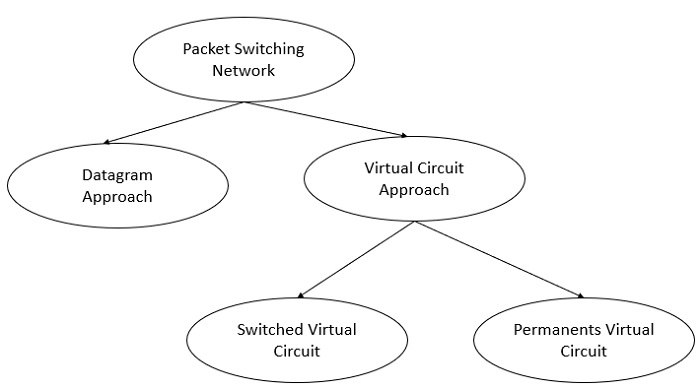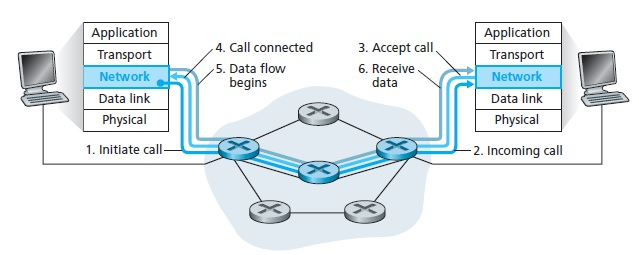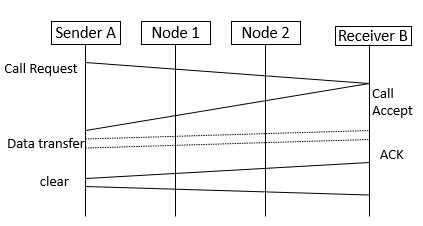
 Data Structure
Data Structure Networking
Networking RDBMS
RDBMS Operating System
Operating System Java
Java MS Excel
MS Excel iOS
iOS HTML
HTML CSS
CSS Android
Android Python
Python C Programming
C Programming C++
C++ C#
C# MongoDB
MongoDB MySQL
MySQL Javascript
Javascript PHP
PHP
- Selected Reading
- UPSC IAS Exams Notes
- Developer's Best Practices
- Questions and Answers
- Effective Resume Writing
- HR Interview Questions
- Computer Glossary
- Who is Who
What is virtual circuit packet switching?
Packet Switched service transfers the data from source to destination. Data is transferred on a type of network in which small units of data called packets are transferred. Each packet contains a destination address within it, where it has to be received.
This type of communication between receiver & sender is connectionless. The internet is also a connectionless network. Most of the traffic over the internet uses packet switched service.
Voice call over the internet is a type of packet switching, where each end of the conversation is divided into small packets & is reassembled later into a complete message. Packets are made up of a header and a payload, header directs it to the destination & data in the payload is the actual data which is to be transferred.
Types of Packet Switching Network
The packet switching network is of two types −
Datagram packet switching
Virtual circuit packet switching
The packet switching network is diagrammatically represented as follows −

Virtual circuit switching
It is a network where a virtual connection is established between source and the destination. Through this network, packets will be transferred during any call. The path established between two points appears as a dedicated physical circuit. Therefore, it is called a virtual circuit. It is a type of packet switching.
It is a connection-oriented service, where the first packet goes and reserves the resources for the subsequent packets.
For examples − X.25 and frame relay.
The pictorial representation of virtual circuit connection over a telephone call is as follows −

Let’s try to understand the concept with the help of data flow diagram as shown below −

Explanation
Step 1 − Sender A establishes a call request connection to connect with the receiver.
Step 2 − Receiver B establishes a call accepting connection to connect with sender.
Step 3 − Data will be transferred whenever the router is established.
Step 4 − Node 1 and Node 2 are intermediate nodes between sender and receiver, the data will be transferred by connecting two nodes virtually.
Step 5 − After transmitting the data, an ACK will be sent by the receiver by saying a message is received.
Step 6 − A clear signal will be sent if the user wants to terminate the connection.
Advantages
The advantages of virtual circuit are as follows −
Packets are delivered in the same order as they all follow the same route between the source & the destination.
The overhead is smaller as full address is not required on each packet as they all follow the same established path.
The connection is more reliable as it is one to one connection.
Less chances of data loss.
Disadvantages
The disadvantages of virtual circuit are as follows −
The switching equipment should be powerful.
Re-establishment of the network is difficult as if there is any failure. All calls need to be re-established.

